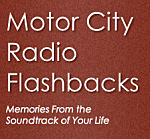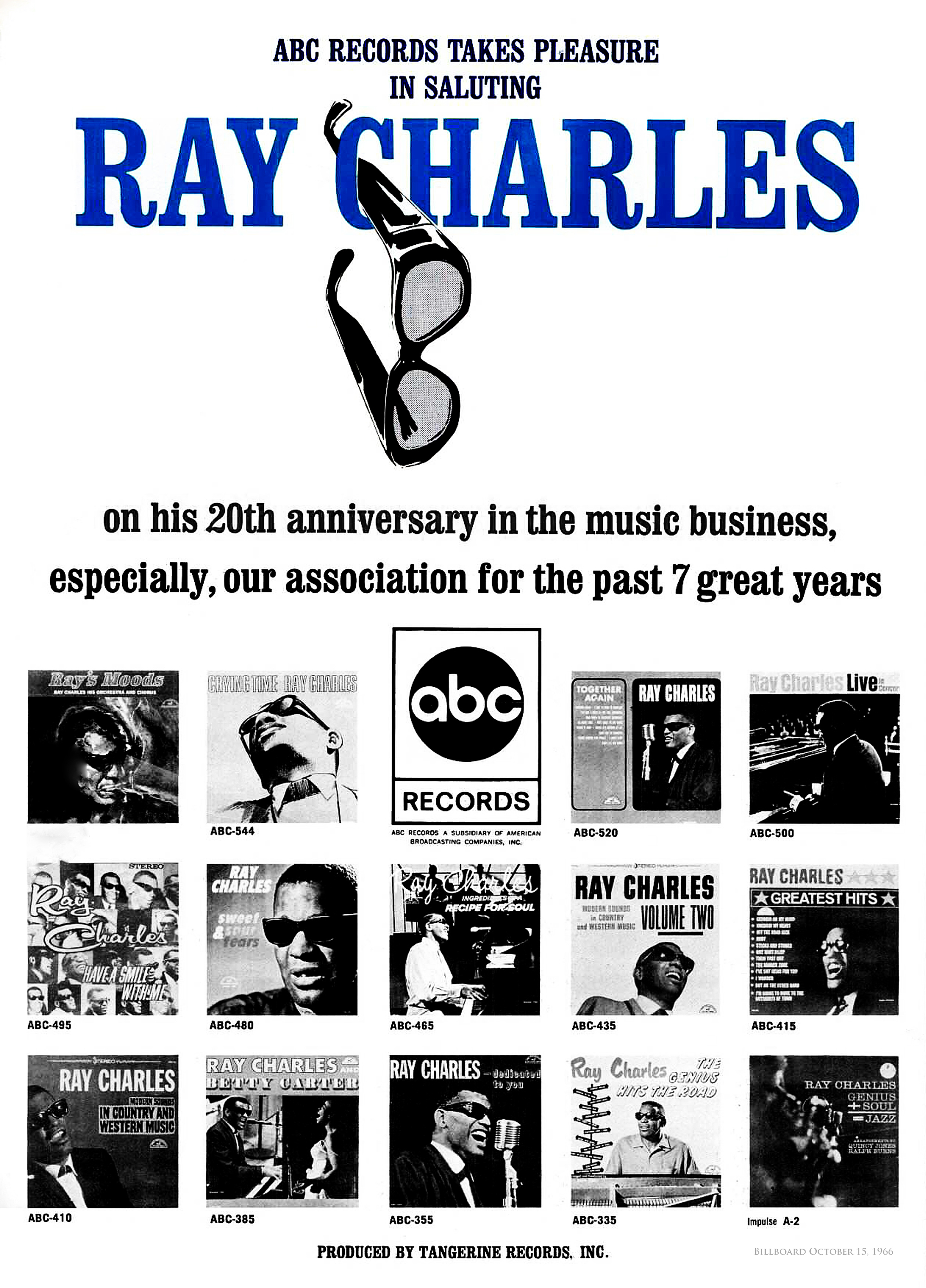Billboard and Recording Music Industry Pays Homage to Ray Charles’ on His Twentieth Year in the Recording Business, 1966
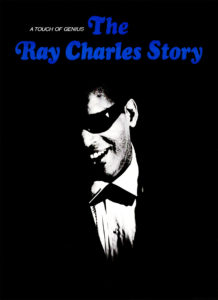
The record business since its earliest years has been marked by the occasional appearance of an artist whose career added something fresh, or unique, to the world’s musical heritage. Such an artist was Caruso; another was Gene Austin; and yet others were Duke Ellington and Charley Parker. The list is a wonderful one . . . it is a list of what may be called the “great originals” and it includes Jimmie Rodgers, Frank Williams, Elvis Presley and Frank Sinatra.
Each had his bag, as they say; and we may be grateful that several of the names are still carrying on in the great tradition. But the wellspring of talent never runs dry, and it is our pleasure to formally take note of – and document – the latest addition to the ranks of the “great originals.” Ray Charles is the name, as The Genius himself says in one of his early singles.
Ray has been on the scene some 20 years. His biography is the theme of another story; but for our purposes – the consideration of Charles as a recording artist – it is important to note that the years he spanned, two decades, were years of profound change in the music business.
Charles had recorded for some obscure labels on the West Coast in his initial years; but his first major development came when he joined Atlantic Records in 1952. “Root” influences were entering the mainstream of pop music. Rhythm and blues was selling in the pop market. This was an exciting blues – based music which was filling the vacuum created by the decline of the bands of the 1930’s and early 1940’s.
As the band business declined, the jazz world went off into new directions; and its prophets were Charley Parker, Dizzy Gillespie, Charlie Christian and others who flocked to Minton’s in Harlem. Locations like Bird – land and Bop City echoed with the new music. Simultaneously – in the late 1940’s and early 1950’s – in another segment of the music business, another “root” influence was about to enter the mainstream of pop music.
This was the country and western ‘field, with its spiritual home in Nashville. It was during this time that several pop artists – notably those recorded on Columbia by Mitch Miller – such as Tony Bennett, Rosemary Clooney and Joe Stafford, garnered big hits with such country material as “Cold Cold Heart,” “Half As Much” and “Jambalaya“.
In still another area of the world of music – Memphis – an innovator named Sam Phillips was laying the groundwork for a history – making musical development: the creation of the “rockabilly” sound, a fusion of blues and country as done by white artists such as Carl Perkins, Elvis Presley, Jerry Lee Lewis and Johnny Cash.
Assuredly, the times were changing. Tin Pan Alley, once centered in New York, had become the entire nation; and the wealth of American music was coalescing into one stream. Today it has coalesced in the artistry of Ray Charles. He has brought to the record buying public the elements outlined above – blues and country and pop; but “his bag” is infinitely greater, for it includes the great treasury of ballads written by the cream of composers affiliated with both ASCAP and BMI.
He is – in one – a great vocalist, a jazz pianist, a fine songwriter, a great arranger; and, as has been pointed out by Jerry Wexler, vice-president and general manager of Atlantic Records, Charles is a constant influence on the contemporary jazz scene. Indeed, he is one of the “great originals” – and this at a time when American music is richer and more complex than it has ever been.
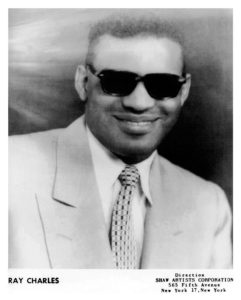
Ray in his early years was influenced by the great, late Nat King Cole and the noted rhythm and blues artist, Charles Brown. He then came to Atlantic (1952) and recorded his first sides – one of which was “Losing Hand,” a notable blues side, particular with regard to the piano and guitar interchange. The first recording date included another interesting side, “Mess Around,” a rousing uptempo blues, written by Ahmet Ertegun, the president of Atlantic. But thus far, Ray was not writing his own material or arrangements.
One year later, however, Atlantic recorded Ray while he was playing around New Orleans. The session, cut at radio station WDSU studios, produced “Don’t You Know” – not one of his big sellers but nevertheless a milestone record because it was a Ray Charles tune, a Ray Charles arrangement and a Ray Charles band.
The year 1954 was a very important one for Charles. He was now writing and arranging, and his famous gospel style -using gospel chord progressions -was very apparent in his work. Wexler recalls: “In November of 1954, Ray called us to Atlanta to dig his new band. We got with him in the afternoon at the Peacock nightclub . . . as soon as we walked in Ray counted off and they hit into ‘I’ve Got a Woman’ and that was it. Zenas Sears got studio time for us, and after much confusion we got out with a tape containing ‘I’ve Got A Woman,’ ‘Greenbacks,’ ‘Come Back Baby‘ and ‘Blackjack‘ . . . it had now happened. Ray was full-fledged, ready for fame.“
From this point forward, Charles made many hit records with his own songs, his own arrangements and his own seven -piece band. Until 1959, he emphasized his gospel-styled songs. Then in 1959 Atlantic cut the noted Genius” session. This featured six sides with strings and voices with arrangements by Ralph Burns. Six sides were done with a big band. This group contained Charles’ own small group plus Ellington and Basie sidemen.
Arrangements were by Quincy Jones, Ernie Wilkins and others. Released under the title, “The Genius Of Ray Charles,” this album opened up for Charles a new segment of the record audience.
So during his Atlantic years, Charles developed greatly in blues, giving it his distinctive gospel orientation; he also developed as a jazz artist, as an arranger and writer; and finally, he also showed his capacity for handling ballads, such as his great performance of the Johnny Mercer-Harold Arlen standard, “Come Rain Or Come Shine.”
During his term on Atlantic, Charles had brought to the awareness of the public the term “soul” (see separate story) as characterizing his type of performance. It is also worthy of mention that his Atlantic blues sides, in addition to their gospel feeling, contained Charles’ own version of the vocal break so characteristic of blues performances, and a diversity of interesting rhythm patterns including a rumba blues beat – as exemplified in his “What’d I Say” record. In these years he also developed his capacity for wit and humor, as illustrated by such sides as “It Should Have Been Me” and by his subtle voice inflections.
Finally – on June 26, 1959 – to be exact, Charles cut a prophetic record. This was “I’m Movin’ On,” written by the great country artist, Hank Snow. As Wexler had said: “Regardless of the genre -gospel, pop, even hill-billy, Ray Charles now has the world for an audience.”
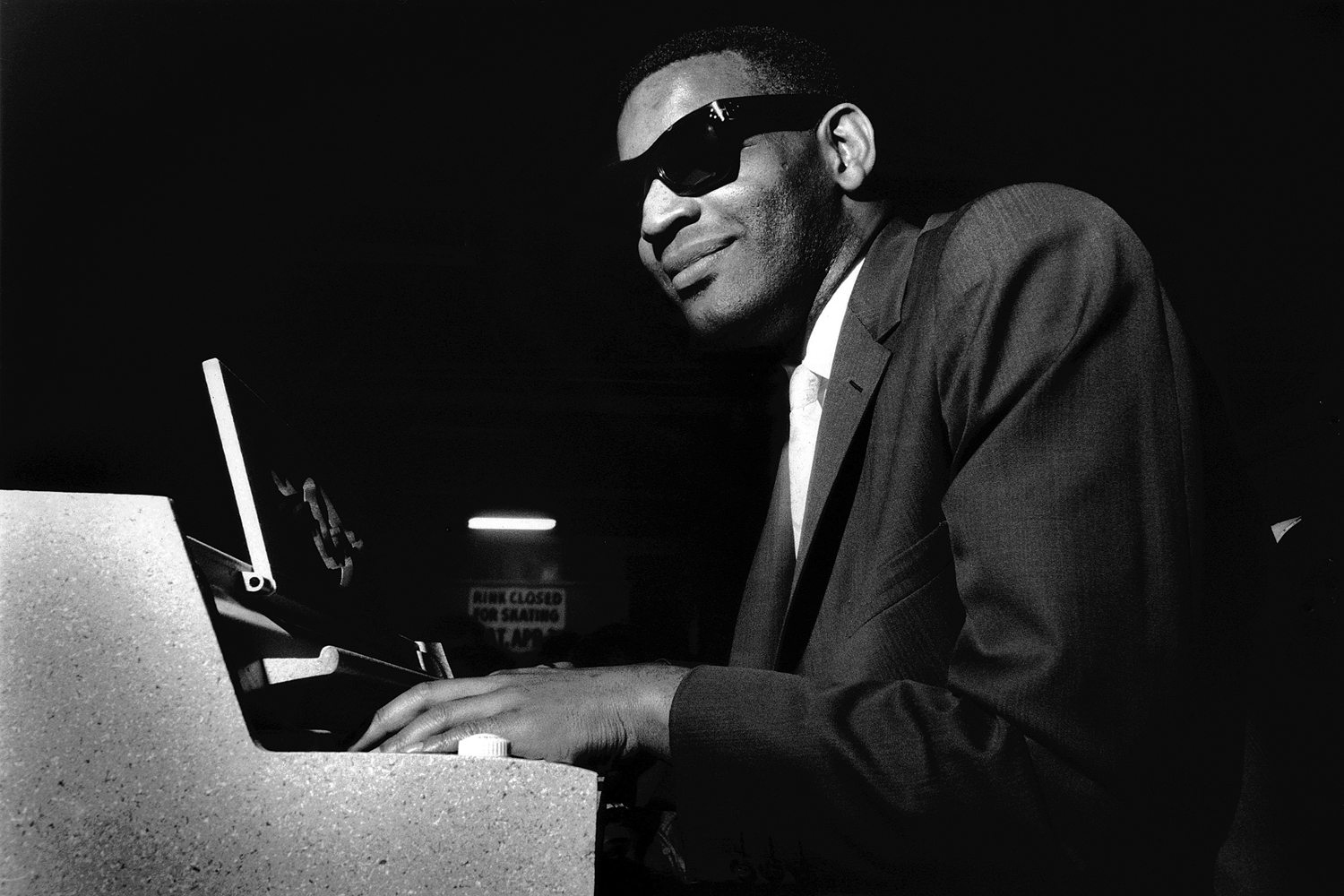
How true. Charles was already very interested in country and western material. He was hip to the songs, to artists like Chet Atkins and Hank Snow, and he was getting ready to project himself to the public in new dimension-country music, with string and big band arrangements.
This was to happen early in Charles’ association with his new (and current) label – ABC. Charles’ recordings on ABC represent a flowering of his talent in many areas – all of them merging into one: pop. He took jazz, rhythm and blues, country and western and big ballads and gave to them all his unique touch; and sold them all in the mass market.
Ray’s first albums on ABC were “Genius Hits The Road” and “Dedicated To You“. These were not in the old Charles jazz or rhythm and blues style; the sides made use of big band arrangements, strings and a chorus, arranged and conducted by Marty Paich and produced by Sid Feller.
The first album produced the notable “Georgia On My Mind,” which became the nation’s No. I single. These two albums, with songs like “Georgia,” “Ruby,” and “Stella By Starlight” broadened Charles’ audiences. His exploration of sophisticated musical areas continued with such albums as “Ray Charles And Betty Carter,” using such great standard material as “People Will Say We’re In Love” and “Baby It’s Cold Outside,” with arrangements by Marty Paich and the Jack Halloran Singers.
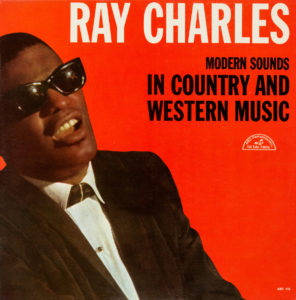
But a blockbuster development was coming: This was Charles’ increasing interest in country music. Two albums, “Modern Sounds In Country & Western Music, Volumes I and II,” were milestones in several ways. Volume I gave ABC its first million-selling album and this included the million-seller single, “I Can’t Stop Loving You,” the Don Gibson song published by Acuff-Rose. In Nashville, where Acuff-Rose headquarters, President Wesley Rose was heard to remark: “That man (Charles) has done a lot for country music.”
Rose, of course, was correct. Charles, a great performer with blues and with jazz, who subsequently proved his artistry with standard ballads, now was proving his artistry with the country and western idiom. The prophecy inherent in his recording of Hank Snow’s “I’m Moving On” was about to be realized. In a set of revealing notes written for the liners of the country albums. Rick Ward, ABC publicity advertising director, tells how a&r director Sid Feller was at first confused when Charles requested a list of country hits of the past 20 years. Sid started collecting the songs, and by the time the recording session was due, Feller was completely sold on the idea.
Working with arrangers Marty Paich, Gerald Wilson and Gil Fuller, Charles produced a body of recorded material which accomplished several things: I) The country sides gave Charles a new dimension – one which had been hinted at in his Atlantic era; 2) Charles’ recordings of country music gave the country field a new dimension, for it brought country music even more firmly into the pop mainstream of American music.
Meanwhile, in an industry which is marked by the phenomenon of changing tastes and artists of short-lived fame, Charles keeps on turning out hit after hit: “Hit The Road Jack,” “Busted,” “Let’s Get Stoned” and others, plus his current “I Chose To Sing the Blues.” The last two decades – the era of Ray Charles – have been important ones for musicologists and scholars of the social scene. These people have realized that integration developed on a musical level long before the present civil rights movement picked up steam.
In this article we have sketched the broad outlines of this development – the influence of Memphis and Presley; the influence of Nashville, and finally, the influence of Charles who saw and understood the entire scene and made it his own with his fusing of blues, gospel, country and standard ballads and jazz-making all of these musical forms desirable to the pop market. In this way, Charles exercised a highly significant socio-musical influence whose total effect on our culture is still gaining momentum.
Meantime, he has not forsaken any of the musical forms which have been part of his development. One of his albums, for instance, is titled “Together Again“
(from the hit song of the country writer-artist Buck Owens). This contains, in addition to the title song, a veritable pot-pourri of both country and rhythm and blues material.
It includes, for instance, Bill Monroe’s “Blue Moon of Kentucky,” which was the first song (and a country song at that) ever recorded by Elvis Presley. It also contains the country items, “I’ve Got A Tiger By The Tail” and “I Don’t Care,” and such rhythm and blues sides as “Watch It Baby” and “Maybe It’s Nothing At All.” This album, incidentally, was first issued under the title: “Country And Western Meets Rhythm And Blues“.
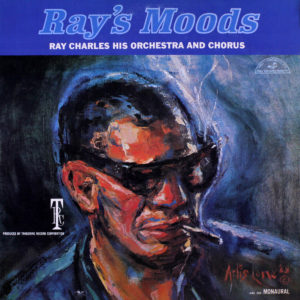
In his latest album, to be released momentarily, there is reflected the broadest range of material. Titled “Ray’s Moods,” this package presents something for all the different types of Ray’s fans. Those hankering for rhythm and blues have it in “What-Cha-Doing In There.” For the jazz buffs there’s “Chitlins With Candied Yams“. His ballad style is illustrated by “Please Don’t Say Goodbye,” and his whimsical, humorous side is reflected in “Granny Wasn’t Grinning That Day“.
And finally, for the country fan, there’s “She’s Lonesome Again.” Buffs of Ray’s piano style will like “Maybe Because It’s Love” and “It’s A Man’s World,” the latter with gospel chord progressions. And Ray, of course, is continuously an innovator, so in this package he sings “Sentimental Journey” as no one has ever done it before.
Such is the artistry of Ray Charles, whose career spanning two decades has brought together the diverse strands of American music fashioning them into a creation that is at once fresh and new while still remaining faithful to the roots from whence it all sprang. END
___
(Information and news source: Billboard; October 15, 1966)
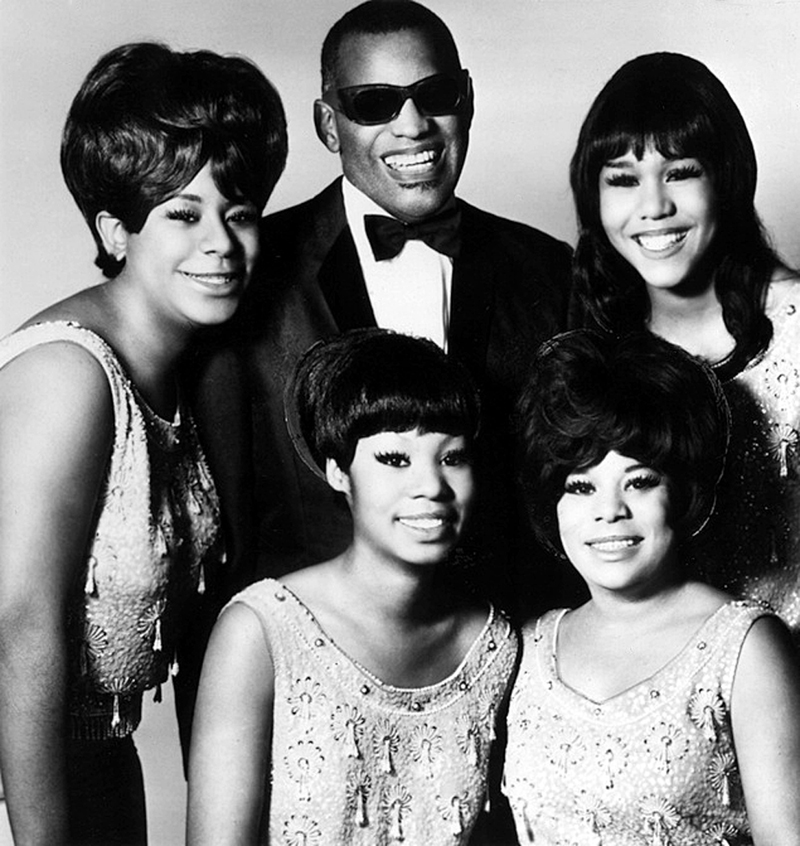
![]()
